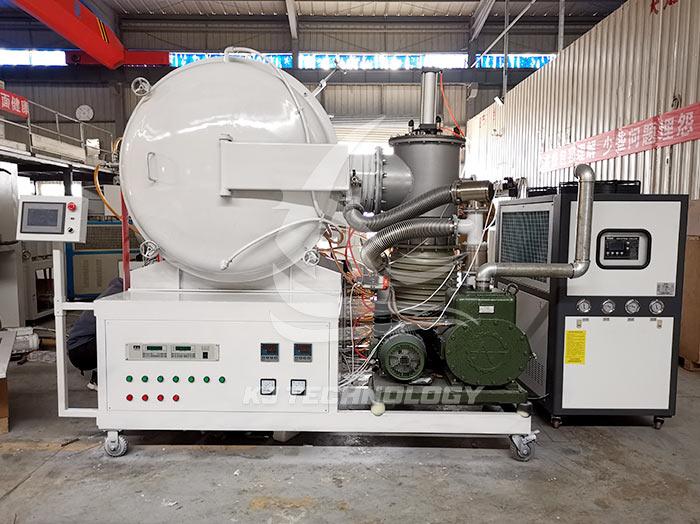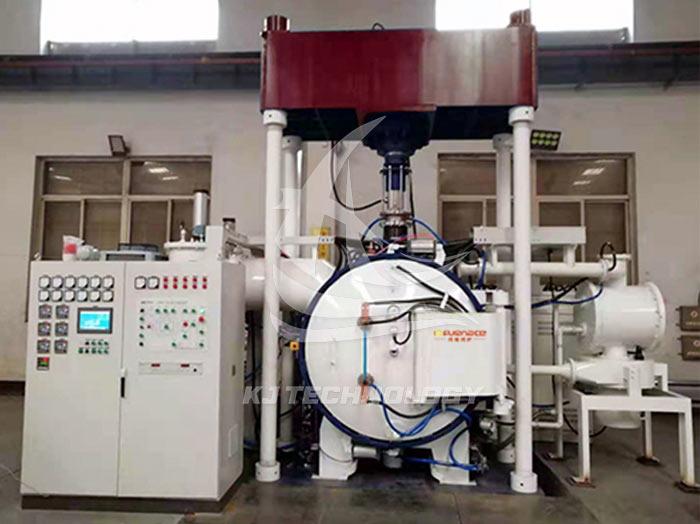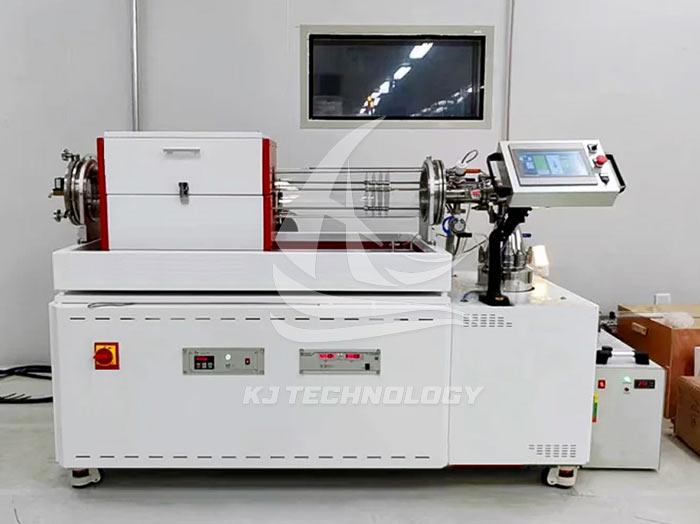Precautions for using customized heat treatment vacuum furnace
 06-16-2025 Author: KJ technology
06-16-2025 Author: KJ technology
As a high-precision and high-value industrial equipment, customized heat treatment vacuum furnaces must strictly follow operating standards during use to ensure equipment performance, process quality, and personnel safety. The following are key precautions during use, detailed in modules:
1. Preparation before operation
Equipment inspection
Vacuum system: Check if the vacuum pump, valves, and seals (such as O-rings) are intact to ensure no leaks.
Heating system: Confirm that the heating elements (such as graphite and molybdenum wire) are not broken or aged, and that the thermocouple calibration is effective.
Cooling system: Check whether the water cooling pipeline is unobstructed, and whether the cooling water flow rate and pressure meet the requirements (such as ≥ 0.3MPa).
Safety device: Verify that the functions of over temperature alarm, over voltage protection, emergency stop button, etc. are normal.
Workpiece preparation
Cleanliness: The surface of the workpiece should be free of oil stains, rust, or impurities to avoid contaminating the furnace or affecting the vacuum degree.
Furnace loading method: The workpieces should be evenly distributed to avoid stacking or blocking the heating elements, ensuring temperature uniformity.
Material compatibility: Confirm that there is no chemical reaction risk between the workpiece material and the furnace material (such as graphite, ceramic).
2. Operation process control
Vacuum pumping stage
Initial vacuuming: First use a mechanical pump to evacuate to a low vacuum (such as ≤ 10Pa), then switch to a diffusion pump or molecular pump to evacuate to a high vacuum (such as ≤ 10 ⁻ ³ Pa).
Leakage detection: After vacuuming, maintain pressure for 10-15 minutes and observe changes in vacuum level. If the pressure rises by more than 10% per minute, the leakage point needs to be investigated.
Heating and insulation stage
Heating rate: Control the heating rate according to the material and size of the workpiece (such as ≤ 10 ℃/min) to avoid cracking caused by thermal stress.
Temperature uniformity: Monitor the temperature difference inside the furnace through thermocouples or infrared thermometers to ensure ≤± 5 ℃ (precision processes require ≤± 2 ℃).
Atmosphere control: If inert gas (such as argon) needs to be filled, it should be done before high temperature to avoid oxidation or carburizing.
cooling stage
Cooling method: Choose furnace cooling, air cooling or oil quenching according to the process, and ensure that the cooling rate meets the material requirements.
Vacuum maintenance: During the high-temperature cooling stage, it is necessary to maintain a vacuum state to avoid oxidation of the workpiece.
3. Safety and Maintenance
safe operation
Personnel protection: Wear insulated gloves and goggles during operation to avoid high temperature burns or radiation.
Danger warning: If the equipment alarms (such as overheating or vacuum leakage), immediately shut down and investigate the cause.
Emergency handling: Familiarize yourself with the position of the emergency stop button, and prioritize cutting off the power and gas sources in case of any abnormalities.
Routine maintenance
Cleaning the furnace: Clean the residue inside the furnace after each use to avoid contaminating subsequent workpieces.
Vacuum pump maintenance: Regularly replace the vacuum pump oil, clean the oil mist filter, and ensure the pumping efficiency of the pump.
Seal inspection: Check the wear of seals every 3-6 months and replace aging parts in a timely manner.
periodic calibration
Temperature calibration: Use a standard thermometer to calibrate thermocouples every six months to ensure accurate temperature display.
Vacuum gauge calibration: Send the vacuum gauge for inspection every year to avoid process failure caused by measurement errors.
4. Special process precautions
Vacuum carburizing
Accurate control of carbon potential is required (through CO/CO ₂ ratio or oxygen probe monitoring) to avoid excessive thickness or thinness of the carburized layer.
brazing process
The selection of brazing material should match the base material, and the brazing temperature should be 50-100 ℃ lower than the melting point of the base material.
Ultra high temperature treatment (≥ 1600 ℃)
The furnace material should be selected from high-purity ceramics or tungsten molybdenum alloys to avoid high-temperature softening or volatilization.
5. Environmental Protection and Energy Management
Exhaust gas treatment: If the process generates harmful gases (such as carburizing exhaust gas), exhaust gas treatment devices (such as catalytic combustion) need to be equipped.
Energy saving measures: Optimize the thickness of the insulation layer, adopt an intelligent temperature control system, and reduce standby energy consumption.
Summarize
The use of customized heat treatment vacuum furnaces should focus on process compliance, equipment stability, and personnel safety. Through standardized operation, regular maintenance, and problem prediction, equipment life and process quality can be significantly improved. It is recommended that users establish equipment operation manuals and maintenance records, and regularly train operators to ensure that the equipment is always in optimal condition.








